Question
the case provided below - Kaya FM Home of the Afripolitan Question 1: Besides Digital Marketing as one of the IMC strategies, propose two other
the case provided below - Kaya FM Home of the Afripolitan
Question 1:
Besides Digital Marketing as one of the IMC strategies, propose two other important IMC elements which Kaya FM would use to get the best return on marketing spend in the IMC strategy.
Question 2:
Assume you have been employed as the Digital Marketing Manager at Kaya FM. In viewofthechallengesbeingfacedbythe stationasdiscussedinthecase, develop a comprehensive Search strategy with examples for Kaya focusing on the below elements:
Onsite SEO
Off Site SEO
Location SEO
Google Search Ads SEM (Search Engine Marketing) strategy going forward.
Question 3:
For Kaya FM to increase revenue, listenership and revenue, they have asked you to assess the effectiveness of their digital marketing ecosystem by looking into their website, social media, email and mobile strategy effectiveness. Make detailed recommendations as to what you might recommend going forward.
For ten years, Gregory Maloka, managing director of Kaya FM, had lived the Afropolitan ethos of Kaya FM. In his career in radio, he had seen the broadcast medium go through several epochs and had never wavered in his resolve to change not only how radio was perceived in South Africa, but also to use it as a tool for social change. Now, at the end of the first quarter of 2018, Maloka was reviewing the station's results. Sales revenues were down, and listenership figures had not grown as projected. Something had to be done quickly to return the station to high growth in audience numbers and revenues. He wondered how to preserve KayaFM's positioning in a competitive broadcast radio landscape, while staying true to the station's Afropolitan positioning.
About Kaya FM
Since 1997, Kaya FM had been broadcasting live twenty-four hours a day, seven days a week on 95.9MHz, with most of its listeners residing in Gauteng. The station targeted mainly black, urban listeners between the ages of 25 and 49, and positioned itself as 'The home of the Afropolitan', (described by Kaya FM as a mature, sophisticated, socially conscious individual rooted in an African heritage - see Defining the Afropolitanbelow).1Maloka believed that Kaya FM offered the ideal platform to pursue the mission of bringing the status of black South Africans into mainstream broadcasting: an idea to which he had been committed for his entire broadcasting career.2(See Exhibit 1for a profile of Maloka).
Kaya meant "home" in isiZulu. The association with 'home' was intended to resonate with the station's listeners as a place to find comfort, encouragement and information that was relevant to their lives. Neil Johnson, head of programming at Kaya FM explained: "The term 'home' represents so much, because many black South Africans during apartheid were thrown out of their homes, thrown off their land".3For the station, the term 'Kaya' also represented a community of like-minded people concerned about the ills of society and the need to determine a new future for themselves and their families. Given South Africa's apartheid history, which had marginalized and denied a dignified existence to black South Africans, Kaya FM's purpose was to have a platform for social change. Thus, the country's history influenced every element of the station's programming and positioning.4
The station combined talk and music in its programming, with a ratio of 60% music to 40% talk. Musically, Kaya FM offered listeners a blend of soulful, adult-contemporary music and other smoother sounds, like R&B, kwaitoa and jazz, all with strong African roots. In addition, it provided news, sport and phone-in discussions on thought-provoking issues that affected people in the township, urban and peri-urban communities of Johannesburg. Kaya FM's discussions focused on issues such as politics, education, entertainment, family, health, security and technology. Programming was influenced heavily by views that listeners shared with the station on a daily basis.5
Within the Afropolitan market segment, Kaya FM's programming went further to differentiate niche markets. Johnson explained the programming philosophy: "Kaya is a boutique. We are not a broadcaster anymore; we have a lot of specialised programmes - we've got to be special in music, we specialise in talk, news has got to specialised...We try to differentiate what we are doing and target a unique set of audiences."6
Kaya FM frequently organised travel experiences for its listeners through Kaya Travel. These included overseas travel packages to Dubai or the French Alps, for example, and local VIP travel packages to attend festive events such as New Year's Eve parties and the Cape Town international jazz festival.7The station also did charity work through its Kaya Cares initiative, involving various corporate sponsors. These initiatives included partnering with Ster-Kinekor and Specsavers to offer pupils at six primary schools in disadvantaged areas free eye tests and spectacles8and a partnership with retailer, Clicks, to host a Moms and Daughters conversation in which top-performing female pupils from schools in disadvantaged areas and their mothers were invited to a day-long event at the four-star Maslow Hotel to discuss social issues affecting young girls.
Kaya FM Presenters
Kaya FM's presenters were a mix of personalities, chosen to appeal to the station's Afropolitan audience. They included Kojo Bafoe, David O'Sullivan, Thabo Mokwele (known as T Boss), comedian Skhumbuzo 'Skhumba' Hlophe,Mapaseka Mokwele, Kgomotso Matsunyane, Gugulethu and Jenny Crwys Williams. The presenters used English as the predominant language because it was the lingua francaof Johannesburg, but they would occasionally also use other local languages: the reasoning being that listeners were 'Afropolitans' whose 'mother tongues' were a range of different African languages, and who mixed languages in their everyday discourse.10(See Exhibit 2for some of Kaya FM's on-air personalities and programmes).
Attracting and keeping highly-skilled, on-air presenters for an extended period had been a major challenge for Kaya FM. After years of developing a huge audience following for the station's breakfast show, presenter Bob Mabena moved to Power FM, a rival station, along with many listeners - a consequence of listeners becoming firmly attached to specific personalities and not the radio station itself. Maloka wanted that to change, so that listeners focused instead on the mission and positioning of the station and not on the personalities of the presenters.11
Maloka regarded talented presenters and well-trained employees as a principal source of competitive advantage. Hence, Kaya FM prioritised human capital development. For Ntswaki Madela, the HR manager at Kaya FM, four key business requirements underpinned Kaya FM's people strategy: "Talent (attracting, retaining, training and engaging), driving innovations, vision (management focus), and maintaining a strong culture with common core values". However, in an environment where employee exodus was high, keeping exceptional on-air personalities for a long time could be a difficult task.12Therefore, keeping staff motivated and committed over the long haul was an important strategic focus for Maloka and the HR team.1
Digital Technology
The majority of the station's audience listened to Kaya FM at home and on radio devices. Although most listeners were from Gauteng, digital technology was changing this. "We have listenership in Cape Town and other provinces, because of online streaming and even DStvband other distribution networks are broadcasting Kaya," said Mokwele.14(See Exhibits 3and 4for location and device listening patterns).
While digital was currently playing an important complementary role in radio broadcasting, Maloka was concerned about the impact of digital innovations on traditional radio. Some scholars and technology enthusiasts shared the view that digital technology could modify or replace many traditional business models, and that radio was no exception.15Kaya FM considered digital technology to be both transformative and a vital enabler of the station's work. Digital programming complemented both online and offline on-air programming. For example, listeners accessed content at their convenience through Kaya FM podcasts, especially when they missed specific programmes. The majority of listeners could access Kaya FM via online streaming and cable TV.16
However, the station's leadership was not in agreement about the extent to which digital technology would transform the radio industry. Johnson was of the view that radio would continue to dominate news broadcasting for many years to come. However, Maloka was sceptical. Given the pace of digital innovations and technology disruptions in many industries, he was not entirely sure if digital should not be the station's main strategic focus for the next five to ten years.
Defining the Afropolitan
The term "Afropolitan" was first used in 2005, in the work of a Nigerian/Ghanaian author, Taiye Selasi, who described Afropolitans as "not citizens but Africans of the world."18Her initial writing focused on the complexities of the multicultural identities of Africans living in the diaspora. The term later became popular not only among the African diaspora but among young, urbanised Africans, who were politically active and culturally aware of their roots, but at the same globally-minded, desiring positive change on the continent.19
Developing Afropolitan consciousness was Kaya FM's mission. Amukelani Mathebula, head of research and development at Kaya FM, described an Afropolitan as, "a cosmopolitan person rooted deeply in African heritage".20Maloka described an Afropolitan as, "a person born in Africa, who lives in Africa and sees Africa as their space. Africa is where they invest their time, money and ideas. They don't have dual citizenship. This is their home. Everything is rooted and centered around all that is Afrocentric. Being an Afropolitan is both a physical and emotional experience; it's not about colour, it's about what your heart dictates".21(See Exhibit 5for a typical Afropolitan audience).
From Johnson's perspective, "the Afropolitan isn't just one person. The Afropolitan has a township portion; there is an aspirational portion, there is a family portion. It is very multifaceted".22As evidence that the Afropolitan mindset was not new, Johnson explained: "When you go back to the 1970s and 1980s, there were successful black farmers, businessmen, lawyers, doctors, traders etc... So the notion that we got independence in 1994 and suddenly we have Afropolitans is incorrect. The Afropolitan has always been there; they were just marginalised, silenced, put in jail".23Mokwele added, "The Afropolitan is not about color anymore, because if it were, you wouldn't have Neil Johnson, our programme manager who is white".24Maloka agreed adding, "If you live in this space, breath this air, and call Africa home, then you are Afropolitan".25
The positioning of Kaya FM as the home of the Afropolitan was informed primarily by the history of the country, especially the lived experiences of black South Africans during the apartheid era. Maloka believed that "the impact of history and how people are going to take certain decisions based on historical experiences were important considerations in crafting a compelling positioning". For the Afropolitan radio station, this positioning reflected the core belief in the abilities of South Africans to shape their own destiny with a deep understanding of their historical past.26
Maloka explained that the station's Afropolitan positioning had enabled it to mobilise a mass of people for socio-economic and political change. "Listeners began to identify themselves as Afropolitans because they liked what the term represented and sought to achieve," he explained. When Maloka arrived at Kaya FM, he knew that to succeed he and his team had to refresh the Afropolitan positioning to have strong differentiation for the brand in a highly fragmented and cluttered radio landscape.27
The South African Radio Landscape
Kaya FM's mission and positioning were deeply rooted in the history of radio in South Africa. Radio broadcasting in South Africa could be traced to the beginning of the 1920s and by 1927 there was one hour of Afrikaans programming and one daily news bulletin in Afrikaans. Then, as in 2018, the state was responsible for licensing broadcasting entities and regulating the airwaves, but in the 1920s only local authorities, not individuals, were deemed suitable to conduct broadcast services.28Since then, radio had become a vital tool in the lives of South Africa's people. Many depended on it for information and education, and radio had played a dominant role in shaping South African society.29A report by Pricewaterhouse Coopers (PwC) showed that the predominant medium for information was radio, reaching more than 88% of rural and urban dwellers in a typical week in South Africa.30For the rural poor, radio was the best channel to get news and practical information, and to hear the views of their neighbors. The South African Advertising Research Foundation estimated that South Africans listened to the radio for more than three hours daily.31
The South African Broadcasting Corporation (SABC) was established in 1936 with English and Afrikaans radio stations. By 1950, English and Afrikaans commercial radio services had been established, with Springbok Radio as the first commercial radio station in South Africa.
From 1950, when the SABC established its first commercial radio station, until 1980, when the industry began deregulation, the SABC dominated the South African airwaves, and the apartheid government used the power of radio to promote its agenda.33The apartheid era radio stations categorised people based on race and langauge, so black people received radio broadcasts in their local language, but, noted Maloka, only as a political mechanism to promote apartheid propaganda.34These stations primarily targeted listeners in rural areas.According to Maloka, "The SABC served the black audience with a very inferior, low-quality broadcast service. For example, Radio Zulu and Radio Xhosa were done in your local language, and the type of advertising that used to go there was this low-quality, mass-branding kind of thing".35
The SABC had three business models: public service broadcasting designed without a profit motive, as a means to educate and inform the general population; commercial broadcasting, designed with a profit motive; and community-based stations designed to serve specific communities. During apartheid, it was common to find some commercial radio stations targeting audiences based on race. "We had OFM, which was for English-speaking, high-end white listeners. You had Jacaranda FM for the same market but for Afrikaans speakers. You had 5FM which catered for young, urban white kids, and so on," Maloka explained.36
Thus, during the apartheid era, black communities had limited access to urban radio.37Maloka noted, "South Africa was ruled by apartheid, and apartheid was a law of segregation, and that fabric of racism filtered through every industry, because it was a way of life. That is how people lived. Black people were put in townships, and that is where we lived, and all we were was labour".38In the radio industry, this mindset began to change in the early 1980s through the efforts of independent radio stations broadcasting from the 'independent' homelands of Bophuthatswana, Ciskei, Transkei and Venda.c(See Exhibit 6for South African Homelands). The emergence of these independent stations provided a huge impetus for the opening of the airwaves in years to come. Maloka explained, "This is how Radio Bop [Radio Bophuthatswana] came about. This is how 702 [Talk Radio] came about. Because they used to broadcast from 'outside' South Africa in Ga-Rankuwa, which was then in Bophuthatswana".39
Radio Bop broadcast to listeners in areas including Alexandra, Pretoria, Soweto and Tembisa (all in present-day Gauteng). From the outset, Radio Bop had talented people and the resources of a modern broadcasting station. Listening to the station proved to be revolutionary for Maloka, Mokwele and their friends. "Radio Bop was the first station that gave us a real taste of what urban radio should sound like," said Maloka. "For the first time, black audiences were served with bespoke urban radio services. This was now like getting urban radio for the first time, in the way it should be, in your own backyard, on your own frequency, on FM, in stereo. It was a great sound. Listening to Radio Bop was refreshing. Politically, it was also emancipating, because through music and through that kind of station, you start to realise that your lives were not in fact what the apartheid state was trying to decide for us".40
Mokwele explained that for him Radio Bop played a big part in beginning the emancipation journey. "People were made to believe they could become something worthwhile. It was during the time of Radio Bop that many young black South Africans became very much alive to their role in the black struggle and thus contributed in various ways to propel the Afropolitan revolution," he said.41
Maloka saw the SABC's establishment of Radio Metro in 1986 (it later changed its name to Metro FM) as an attempt to contain the increasing influence of Radio Bop. "Metro FM was designed to speak to the black market, and the best way to kill Radio Bop was to take everybody from the station and pay them double the amount of money they were receiving," he maintained.42This action allowed Metro to assemble some of the best radio presenters and programme managers, and ushered in a new dawn of radio programming. "Obviously, Radio Metro became big very quickly," said Maloka.43
Nevertheless, Maloka felt that while Metro was serving the needs of black audiences, the station was still under the control of state machinery and so was not exploiting its full potential. "Radio Metro was limited, in that the only power it wielded was the fact that it had millions of listeners, but it was always at the mercy of advertisers, and survived because they were inside the SABC," he said.44
Deregulating the Landscape
A new era for radio became possible after the democratic government came into power in 1994. It was at this point that the government opened up participation in radio broadcasting to private individuals. It established the Independent Broadcasting Authority in 1995 to regulate the use of the airwaves and issue broadcasting permits. With the liberalisation of broadcasting, several commercial stations were formed. New stations that focused on radio formats targeting black audiences were favoured.45"Part of the requirements for obtaining a radio licence was to broadcast on Africa, so local content as well as issues relating to Africa was a priority for the new stations" said Johnson.46
The SABC began to sell off some of its stations, thus creating a range of commercial stations that were outside state control.47In 1996, six important SABC radio stations were sold to private entities. They were Radio Highveld (94.7 Highveld Stereo in 2018) and Radio Jacaranda (Jacaranda 94.2 in 2018) in Gauteng, East Coast Radio in KwaZulu-Natal, KFM in the Western Cape (KFM 94.5), Radio Algoa in the Eastern Cape (Algoa FM), and OFM in the Free State.48
In 1997, eight new commercial radio stations were also licensed to operate in Johannesburg, Cape Town and Durban. These included: YFM and Kaya FM in Johannesburg, Heart 109.9FM in Cape Town, and Gagasi 99.5FM in Durban. Cape Talk in Cape Town and Classic FM in Johannesburg also received licenses during this time. A decade later, other stations would receive licenses to operate commercially in 2007, such as Capricorn FM in Limpopo and M-Power radio in Mpumalanga.49For Maloka, "the consequence of the deregulation was that black audiences could now be targeted with new and enriched radio formats".50
Disrupting the Landscape
"The big disruption came in 1997. YFM launched then. So, did Kaya FM," said Maloka, who had been one of the founding presenters at YFM.51He went on to hold other roles at the station and ended his career there as general manager, before moving to Kaya FM. Both stations had been founded on the premise of breaking the mould of existing radio stations, by focusing on black audiences in particular and offering unique radio formats and programmes specifically designed for this audience.52
YFM was a youth radio station, based in Gauteng and focusing on urban, contemporary music formats such as Kwaito, Hip Hop, R&B and Afro-jazz, with only a small amount of time dedicated to talk. Describing itself as 'the soundtrack to an urban life', YFM's main target market was a young, black audience who considered themselves 'imaginative, curious, and ambitious'.53The mission of YFM was to bring the status of the black listener to the fore, following years of systematic racial discrimination. It saw the best way to accomplish it, as being to focus on young, black South Africans as a means of creating a new identity for the next generation. The station's vision was to attract under-served black audiences and start a socio-political revolution.54
Some radio presenters and DJs, who would later become big radio personalities in their own right, learned their skills at YFM. Maloka, for example, ascribed his success at Kaya FM to the many things he had learned at YFM. "I always say that in my tenure with the team here, Kaya FM's success has been YFM's school fees. Because then we knew how to change the revolution and now we know how to package it," he explained.55 Likewise, Mokwele believed that his success also derived primarily from what he had learned at YFM.56
Thus, while YFM focused on a young, black, urban audience, and Kaya FM catered to a more mature, sophisticated, urban audience, the agenda was the same: black empowerment. Johnson explained: "Kaya gets its license in 1997, so we start with this euphoria of independence: freedom-coming, post-elections, black ownership, people running their own stations, and doing their own thing".57
Untapped Black Middle Class
Right from the beginning at YFM, Maloka and his colleagues knew that they had to present a new narrative to the market if the status quo were to change. They signalled their intent with a Molotov cocktail launch invite that they sent out to various companies and advertisers. But this approach was not without challenges. One of the effects of apartheid was that the media industry was controlled and dominated by white people. "We were dealing with an industry with a strong bias. Media agencies and so forth were all exclusively white, and every brand owner and marketer was also white," explained Maloka. "In fact, it was like that up until some ten years ago, and to a large degree it still is, which we have to deal with on a day to day basis".58Stan Katz, one of the founders of 702 Talk Radio, reflected this view in 1996, when bidding for control of Radio Highveld, saying that the station would continue to target white audiences, because commercial radio was "about delivering audiences to advertisers, which means giving them what they want".59
Thus, said Maloka, when YFM started out, "you had one of the big banks who said, you are not going to see our money. You also had one of the biggest advertising agencies at that time, who said to us, 'We will not touch you with a broomstick. You are loud, you are irreverent, and you don't know what you are talking about'. The advertising industry rejected us because we were young, black and therefore not a market to go after".60Johnson also recounted similar experiences at Kaya FM: "Every station, mostly black ones who were greenfields, had a torrid time because you were coming into a market at ground zero: you had to build everything from scratch. This was difficult".61
Yet, the enthusiasm for changing this mindset was so strong that Maloka and his colleagues at YFM refused to be shaken by what advertisers and business leaders said to them. They knew that they were on a mission to achieve something greater. They were convinced that if the narrative about black people was to change, it had to be told by black people, and they were prepared to be persistent in trying to bring about that change. For Maloka, this had been a lifelong mission: to tell the African story in the most refreshing manner, so that lives would be transformed and minds could be shaped for good. This could be achieved, he believed, through a strong Afropolitan consciousness.62
Maloka observed that during the apartheid era, many advertisers did not consider the opportunities presented by the black market. And because the laws were designed to confine black people to specific places, the mostly white-controlled firms did not commit to understanding this market. "People missed the fact that even in those conditions we had a vibrant black middle class.dRadio and brand managers did not think much about this target market, which was very short-sighted," he said.63He noted that very little research had been done to understand this market or to reveal deep insights about the characteristics of the black middle-class: a fundamental requirement for marketing success. Where research was conducted, he said, it was more about products than it was about understanding the black audience. This lack of research perpetuated a limited understanding of the black audience that had led to years of neglect and ignorance within the advertising industry.64
Maloka stressed that despite the precarious living conditions and life experiences of black people during apartheid, they still managed to have wealth for themselves, build strong businesses and cater for their families, much in the same way that white middle-class people did. He observed, "Ironically, the assumption was that if you are black, then you are poor. You stay in the township and that was it. Because they thought that dispossession took care of it. They were wrong. Because all dispossession can do is to strip you of your physical possessions, but it can never take away your mind; it can never take away your education; it can never take away your resolve as a person; it can never take away your resourcefulness to start anew".
Maloka believed that if advertisers and media houses had deeper insight into the culture, behaviour and lifestyle of black consumers, they would have better understood and categorised the market. Bundling black people together into one, undifferentiated group generated little value and prevented in-depth consumer insight necessary for effective strategy. "Nobody understood the life and culture of the black middle-class. And the fact that we had Radio Metro for such a long time before getting other radio stations perpetuated the mindset that black people are homogeneous people and that we all do the same thing: we all listen to the same thing, we all eat the same food. This was troubling," said Maloka. As a consequence of this oversight, he believed that most companies were missing lucrative marketing opportunities.66
YFM and Kaya FM sought to change this: to chart a different path and speak to well-differentiated black listener groups in order to achieve industry buy-in. Audience numbers grew fast during the formative years of YFM. By the late 2000s, YFM had 1.2 million listeners, with over 500 000 young listeners choosing YFM as their preferred station. However, advertiser reluctance, coupled with various management missteps, meant that advertising revenues lagged behind for a long time, and the station struggled to break even.67Such financial woes were not characteristic of YFM only. Kaya FM suffered a similar fate in its early years.68
Regarding Kaya FM, Johnson, who joined Kaya FM in 2005, recalled his initial assessment of the situation at Kaya FM in 2001 when he was appointed as a consultant on a due diligence assignment: "When I arrived here, the financial situation was very bad. However, things stabilised when five shareholders put money into the station in 2001".69 There were also some operational and structural issues that had to be dealt with to set Kaya FM up for future success. "There was no control over music, no control over news, no control over sales. People were doing their own stuff; there was no one to pull them together," he explained.70
To overcome these challenges, the station had to improve its systems, rebrand, and realign the mix between music and talk to achieve a better balance. Thus, between 2005 - 2008, audience confidence began to improve, and listenership also grew from 400 000 to 800 000. It later reached 1.2 million in 2015, following the station's organisational restructuring efforts.71
Understanding Listeners at Kaya FM
When Maloka joined Kaya FM, the station had just emerged from its financial woes and was breaking even. But things could still improve, providing an excellent opportunity for Maloka to make his mark. On his appointment, Maloka envisioned his role as follows: "The Kaya FM audience is growing in numbers, changing psychographic makeup and upping the stakes in their expectations of being able to live the Kaya FM brand as a bonafide lifestyle choice. I look forward to joining the team to further entrench the brand in the hearts and minds of our listeners, advertisers and strategic partners".72(See Exhibit 8for Maloka's initial comments when he first joined Kaya FM).
The audience at Kaya FM was older, with needs and aspirations uniquely different from what Maloka had experienced at YFM. This meant that Maloka had to change strategy to reach them effectively. Content had to be different. There also needed to be regular changes in the on-air line up with experienced and skilled show hosts to deliver meaningful conversations with Afropolitan audiences.73Ultimately, as audience demographics changed and the radio landscape became more challenging, it was vital to understand the station's listeners so that it could deliver on the Afropolitan brand promise: creating value through meaningful relationships with listeners and strategic partners.
The challenge Kaya FM faced was that of expanding the Afropolitan, black, middle-class audience to become a dominant target segment, and convincing media planners and advertisers that this was an attractive and viable target market. Thus, the station made continued, concerted efforts to educate mainstream industry and the general public about the Afropolitan and the value of this market.74
Research for Customer Insights
To achieve this, Kaya FM instituted a strong focus on market research that would enable it to understand the black middle class intimately. The station used both qualitative and quantitative methods in its research. Advertisers liked quantitative data, said Reitumetse Mpholle, research and development specialist at Kaya FM, noting that most firms were interested in numbers and listenership trends when determining where to invest their money. Thus, it was important for the research team to keep abreast of the numbers continuously. However, to gain deeper insights into the station's listeners, Kaya FM's research team also used qualitative methods such as interviews and focus group discussions. "We spend a lot of time understanding the listener, their needs, their psychographics, so that we can provide solutions to their needs," said Mpholle.75(See Exhibit 9for listenership trends).
Another critical role of research was to understand social trends so as to stay ahead of the competition. Mpholle explained, "Part of how we do research is focusing on the 16% of our listeners who are influencers: people who are aware of trends that are coming and are able to pick up those trends before the majority does. From those conversations, we identify the big trends and try to push content in those directions. This is how we try to stay ahead of our competition."76Key questions the team asked included: What problems does the black middle-class face? What are their values? What are their struggles and concerns, and how can Kaya FM provide current and future solutions for them? Thus, "understanding the unique struggles of the people that fall within this broad term called the black middle-class - what their problems are and how we can provide solutions for them is important to us," Mpholle elaborated.77
Segmenting the Market
Kaya FM's marketing team believed that listeners in different market segments had different aspirations, preferences, needs, wants, struggles and daily realities. The station segmented its market based on a range of demographic, psychographic and geographic factors, along with the benefits that they sought from listening to Kaya FM. Important variables Kaya FM used included age, gender, race, income, lifestyle, location, self-concept and socio-cultural factors such as beliefs about Ubuntu. Johnson explained, "The nuances of our market are really intricate and even for the urban, peri-urban and rural areas the differences are huge".78Mpholle observed, "We are one of the few companies to base our brand on people, so wespend a lot of time understanding the listener, their needs, their psychographics and how we can provide solutions to their problems".79(See Exhibits 10, 11, 12, 13and 14for segmentation factors).
Kaya FM chose to use the Socio-Economic Measure (SEM)etool to segment its market, instead of the more widely-used Living Standards Measure (LSM) tool. The station did this because it found that the SEM tool offered a better understanding of the unique, lived experiences of its target audiences. The LSM measured what a person had, whereas the SEM measured how a person lived. Mpholle explained: "Although possessions serve as a measure of wealth, fundamental questions to ask are: Who pays for those things? Where do people live? What is their work status?" Illustrating what Kaya FM saw to be the weakness in the LSM tool, Mpholle pointed out that because it measured what people owned, people living in the most remote and poorest parts of South Africa, who possessed many durable items, were placed in a higher LSM, even though they were actually very poor.80(See Exhibit 15for the SEM categories).
Customers Change
Another fundamental challenge for Kaya FM was accounting for changes in listeners' needs, and preferences over time. Maloka explained that listeners changed because they went through various life stages or because society and culture changed over time. Technology, for example, had brought about enormous changes regarding how people listened to the radio.81
Many black South Africans began to see real change in their economic status after the end of apartheid. Johnson noted, "From the period between 2000 to 2010, black South Africans were moving into other LSMs so fast because people were getting jobs and better opportunities. They were consuming more. If you looked at yourself in 1997, compared to 10 years later - there was a massive change".82"In this new dispensation, the dynamics of the country have changed, politically, socially, economically - and we need to represent that," added Johnson.83
One major change was that the target audience felt more able to speak about things that they would previously not have discussed in public. Johnson demonstrated the enormous changes that had occurred in listener behaviour over time by asking Mokwele, "If you took the subject matter that you talk about on a daily basis, 10 years or 12 years ago, would you have got the same call-in's and same response?"84"Obviously not," answered Mokwele.85Johnson continued, "People are now talking about transgender issues, they are talking about sexuality, they are talking about money issues, politics, family issues; people are free to talk about anything. And I must say it's most of the people. People are willing to pick up the phone to phone in. That shows you the change that has occurred over time. It just shows... if we don't move with society, society will leave us behind. So, we need to be ahead of society". 86
Competitors React
Staying relevant in a dynamic marketplace was a daunting challenge. Not only did Kaya FM have to adapt to changing listener needs, but the station also had to deal with the challenge of competitor reactions to its success. As Kaya FM found success with the Afropolitan middle-class audience, so other radio stations became eager to copy the station's style and content. "Look at what 702 did," asserted Mokwele. "They felt they couldn't poach all of Kaya FM's talent, but what they could do is that they can also go black, because they also want the Afropolitan. Now many of the presenters on their airwaves are black".87
Mpholle saw the same trend with other stations, "The presenter line-up across most stations used to be very white, but they are now going black. Right now, 94.7 has almost a million listeners. Of those million listeners, about 800 000 listen to one black female host". 88(See Exhibit 16 and 17for major competitors' listenership numbers in Gauteng and South Africa).
Kaya FM responded to competition by mixing things up a bit and becoming "very dynamic with our presenter line-up" said Mpolle - and hiring David O'Sullivan, a white presenter, to host its morning drive show when Mabena left. The station's Afropolitan positioning was all about transformation and black consciousness, so to bring a white presenter onto one of its most important shows was a major decision. Some criticised Kaya FM's decision as hypocritical, saying that on the one hand the station was positioned as Afropolitan, but on the other hand, it was using a white person to advance the Afropolitan cause, which appeared counterintuitive. Johnson described the reaction, "With David [O'Sullivan] people were like, 'What is this guy about?' But he's maintained the audience ever since Bob [Mabena] left".89
Stations in other provinces had also started copying Kaya FM. Mokwele asserted: "The Afropolitan formula is now spreading to other provinces; who knows what Cape Town is doing with Afropolitan positioning? Durban is copying what we are doing right now. They think that because they are in another province, they can redo what we do. I have become a victim of that ... they've copied two of my programmes and cut and paste on their shows".90
Limited Financial Resources
As its competitors reacted, Kaya FM continued to try to be innovative with its programming and with its marketing campaigns. From the very beginning, it had had to accomplish it with limited resources. When the station started in 1997, it had faced enormous financial constraints. It struggled for a long time against its well-resourced, more established competitors and had to think creatively about how to use the resources at its disposal to build awareness and a favourable image. Johnson elaborated: "We did not have money to splash on outdoor billboards and advertising. We had to be creative to gain awareness and build confidence in our target audience and advertisers respectively".91
Thus, the majority of marketing decisions required Kaya FM to make trade-offs between different objectives, since available resources were never enough to address all objectives. The company had to continuously decide which objectives required immediate attention and which ones could wait for later. Johnson explained some of the trade-offs Kaya FM had to make saying: "Since Kaya does not have the capacity to do national sales, we have had to outsource that function to MediaMark.fInstead, we have an in-house sales team, which sells to the government, local businesses, concerts etc...".92
The station also had to adopt innovative approaches that would give it maximum impact at a relatively low cost. Kaya FM's "Two Strangers at a Wedding" campaign was an example of this approach. Said Johnson: "We did a social experiment called 'Two Strangers at a Wedding'". We married two people who had never seen each other before. It was very untraditional, but we had to be tactical to get awareness and to get people to feel connected and pay attention to us." The experiment involved marrying people who had engaged in many conversations on radio, but saw each other's faces for the first time on the wedding day, which took place in the forecourt of Kaya FM. "This was unconventional and went against the norms of society, but it got so many people talking and paying attention to what we did at Kaya FM," said Johnson.93
Kaya FM also focused on building strong relationships and a community of loyal listeners as a defense against the actions of its competitors. Johnson explained: "Part of the innovation was to introduce mid-morning programming - in-office listening to get people to listen to us while in the office". Another tactic was to position itself as a specialist radio station to attract audiences because of its specialisation in the domains of, for example, sports, news, politics, entertainment, community focus or business.94
Making sure that both listeners and clients benefitted from the Kaya FM brand was a priority for Maloka and his team. Kaya FM's revenue targeting intended to ensure that the station provided good value for money to all stakeholders. Events were therefore highly specialised, attracting smaller, more focused audiences who perceived value in the offerings. Johnson explained, "The events done are small, targeting about 1 500 to 3 000 people. We try to make it a better, personalised experience for our audiences".95"Our events are normally sold out two to three weeks after launch," added Mokwele.96
Audience Perceptions
Kaya FM regularly engaged listeners to gauge their perceptions of the station. The research showed that for loyal listeners, Kaya FM was indeed home. For example, when asked which station was her favourite, one listener exclaimed without hesitation, "Kaya! I love their shows, especially the mid-day shows. It is personal, engaging, and touches on the very issues that affect us every day; relationships, security, politics, finance etc." Another said, "Kaya is the place I go to when I need entertainment, sport, and news. I enjoy their soul music and Jazz very much. Also, the way they go about sports analysis is very educational and enjoyable. But I also tend to spend time with other stations, such as 702 and Metro because I love their talk shows. I like to call myself a variety seeker". Another listener shared her views saying: "Kaya has a perfect balance as a source of entertainment and relevant educational content for many black people in Joburg".97(See Exhibit 18for some audience perceptions).
Generally, listeners held the view that the events and topics Kaya FM focused on were personal, socially relevant and professionally enriching while highlighting the experiences of Afropolitans. Regular listeners associated Kaya FM with the words: fun, home, global citizens, Joburg vibe, soulful music, talk and upbeat.98(See Exhibit 19for brand associations of Kaya FM).
Kaya FM as a Catalyst for Social Change
In retrospect, Kaya believed that it had played a role in stimulating a range of social changes in South Africa. These social changes had been facilitated through the station's activities in a range of areas including travel, family, insurance, investment, education, arts and culture. Regarding the impact of its promotion of travel, Mathebula explained: "Because of the apartheid legacy of travel restrictions, both within the country and abroad, many people do not have travel experience especially outside South Africa, so we have specialist travel events to encourage travel in the country, in Africa and to other parts of the world". Mathebula believed that these travel experiences had helped to foster a kind of cultural revolution, enabling Kaya FM listeners to appreciate other cultures in terms of food, language, music and culture generally. They had fostered an appreciation for diversity while recognizing individual uniqueness.99
Likewise, Mathebula noted that the station's promotion of black artists had helped them to showcase their craft to local and international audiences and to promote a positive image of African art. In the field of education, the station encouraged staff members to pursue education to the highest level. A number of Kaya FM presenters had obtained various postgraduate degrees and the station continued to sponsor many who had the ability and commitment to do so. It paid their fees in full, regardless of the institution or the cost of the fees involved. The aim was to lead change by setting a good example, and most importantly to encourage listeners to pursue their own dreams.100
In an effort to reinforce family structures, Mathebula further explained that Kaya held periodic family days to promote positive family experiences between parents and children. Moreover, to empower Afropolitans to make better business and investment decisions, Kaya dedicated significant time to updating and educating listeners on investments and finances, highlighting trends that impacted the financial decisions of individuals, families, entrepreneurs and corporates.101
Looking to the Future
Maloka had mixed feelings about what the future held for Kaya FM. He felt that radio listeners and the radio industry had changed. Listeners were more empowered than before and had more choice than before. Things were happening faster in the marketplace, requiring a different kind of leadership and marketing strategy. While Maloka was happy about how far the station had come, he was not at all satisfied about one thing: for advertisers, Afropolitans were still not a mainstream market and did not command a significant enough portion of their marketing budgets. Revenue targets had been missed for 2018. "Is there something wrong with our Afropolitan positioning?" he asked himself. Until Afropolitans became mainstream, he could not rest.
Exhibit 1 Biography of Gregory Maloka
When Maloka was a child, his uncle ignited his love for radio, exposing him to international radio stations and urging him to have an open mind. His father taught him to appreciate music and inspired him to collect music at an early age.
When he was 13 years old his father bought him headphones and microphones, and Maloka decided to start his own station (Radio MLK). Using a 90 BASF Chrome tape, he recorded a link, played a song and inserted advertisements that he picked up from the tuner. The station broadcast within a short radius so listeners were within his immediate community.
Having completed his schooling at Namedi Secondary School in Diepkloof, Soweto, Maloka studied for a Diploma in Commercial Practice at Technikon North Transvaal.His involvement in radio continued while he was there. Although he was not part of the line up at the institution's radio station because it was already full, he offered to start producing station manager, Joey Nthlatleng's show and got the job. His break came when one day Nthlatleng had a test to write, and asked Maloka to fill in for him as a presenter.
When YFM was in the process of launching, Maloka's friend, Peter Mokgothu, told him about the new station and Maloka auditioned for a slot as a presenter. However, more than 600 people auditioned to fill only 15 positions. So while he was in the queue, Maloka wrote a proposal about how to make the station successful and handed it to the late Arabi Mocheke asking him to read it. After four hours Mocheke emerged from his office and invited Maloka to the station's management meeting the following day. Mocheke was impressed with what he had read and wanted Maloka to share his insights with the rest of the managers.
Maloka joined YFM in January 1997. He held various positions including music manager, programmer, station manager and, finally, general manager. After leaving YFM in October 2004 and before joining Kaya FM as managing director in July 2008, he held positions as a partner at consumer insights firm, Instant Grass and director at Madlosi (an entertainment company) - a position he still held in 2018.
| Exhibit 2 Some of Kaya FM's On-Air Personalities Show/Time Slot | Presenter | Kaya FM's Description of Presenter and Show |
Breakfast with David Mon-Thur, 06h00-09h00 | David O' Sullivan | David O' Sullivan is a seasoned journalist who has won many awards during his career. He began his broadcasting career at Capital Radio, during which time he worked in the USA, UK, Australia and New Zealand. Until joining Kaya FM, he had worked for 702 since 1995. Any morning that does not include "Breakfast with David" means starting the day without the latest news analysis on the most prominent political stories. "Breakfast with David" offers bite-sized commentary by well- informed analysts who provide insights for the discerning Afropolitan listener. |
The Best T in the City Mon-Thur, 09h00-12h00 | Thabo Mokwele | Mokwele (T Boss) is the host of "The Best T in the City" and the "Touch of Soul." His show is interactive, informative, inspiring, educational and empowering. He aims to empower people to take charge of their lives by raising some topical social issues and seeking adequate responses. An audio magazine with the aim of being a one-stop interactive, informative, inspiring educational and empowering show. Topics on the "The best T" not only aim to inform and impress the listener but also to raise some form of awareness, positive or negative |
The B Side Presented by Bridget Masinga Mon-Thur, 12h00-15h00 | Bridget Masinga | Bridget Massinga is an actress, TV and radio personality, fashion model and philanthropist. She has rich experience in radio broadcasting, having begun at YFM. The "B-Side with Bridget Masinga" is about the unexpected in everything, from lifestyle, to the arts, to the personal. The show explores unchartered territory when it comes to the Afropolitan's relationship with themselves and those around them, while touching on book clubs, cooking, films and more. |
Kaya Biz Presented by Gugulethu Mon-Thur, 17h00-18h00 | Gugulethu | At the helm of Gauteng's biggest business radio show, "Kaya Bizz", is Gugulethu who will be leading the conversation on what is next for the Afropolitan business landscape. The show presents local and international business news, entrepreneurship, corporate and investment banking. |
Today with John Perlman Presented by John Perlman Mon-Thur, 18h00-19h00 | John Perlman | The aim of the show is to provide the ultimate debate platform, raising current issues affecting the Gauteng province, but of national relevance. Topics are based on current affairs and politics with an aim to inform as well as to make a difference. |
Home with Mapaseka Presented by Mapaseka Mokwele Mon-Thur, 19h00-20h00 | Mapaseka Mokwele | This show talks to the listener who cares about issues affecting the home and the family. Here the listener's opinion is prominent and valued. The guests on the show offer expert advice and also offer personal accounts of how they dealt with and were once affected by the topic at hand. |
Life with Kojo Presented by Kojo Baffoe Thursdays, 20h00-21h00 | Kojo Baffoe | Life with Kojo Baffoe navigates the nooks and crannies of every aspect of life from the frivolous to the serious. It is a manifestation of the random things that go through Kojo Baffoe's mind and the people and stories behind those thoughts. It is about being naturally curious, engaged and interested. |
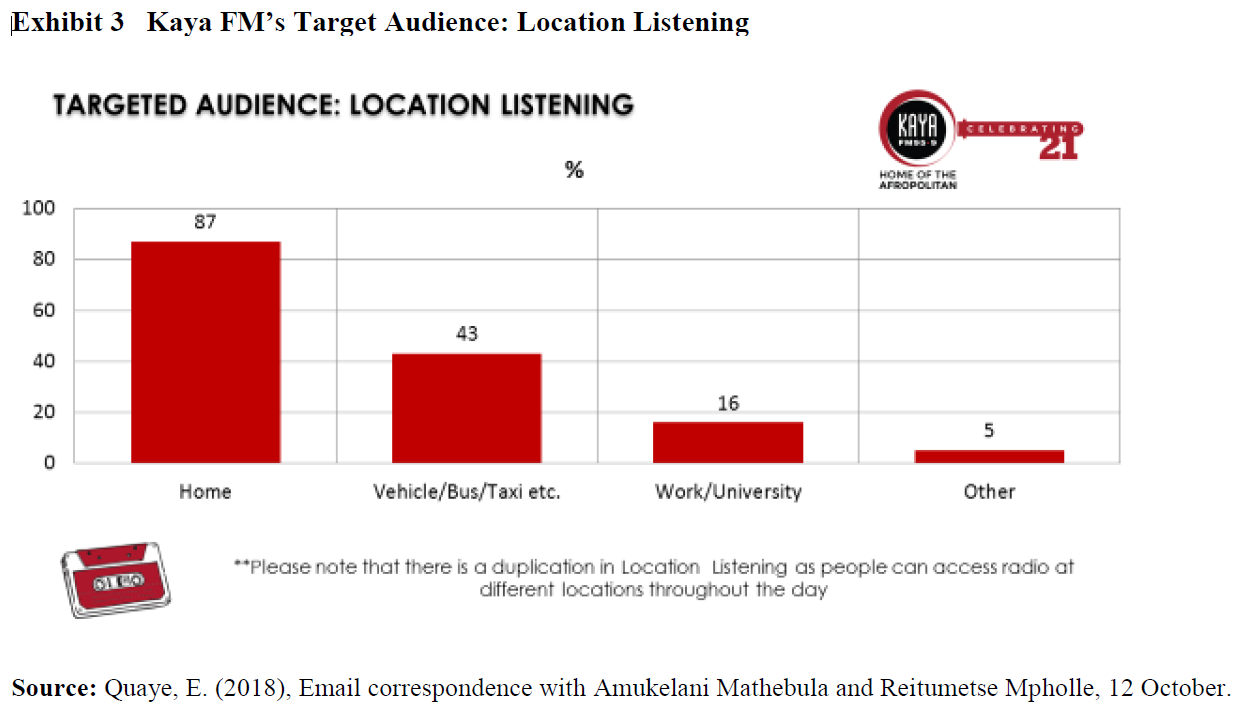
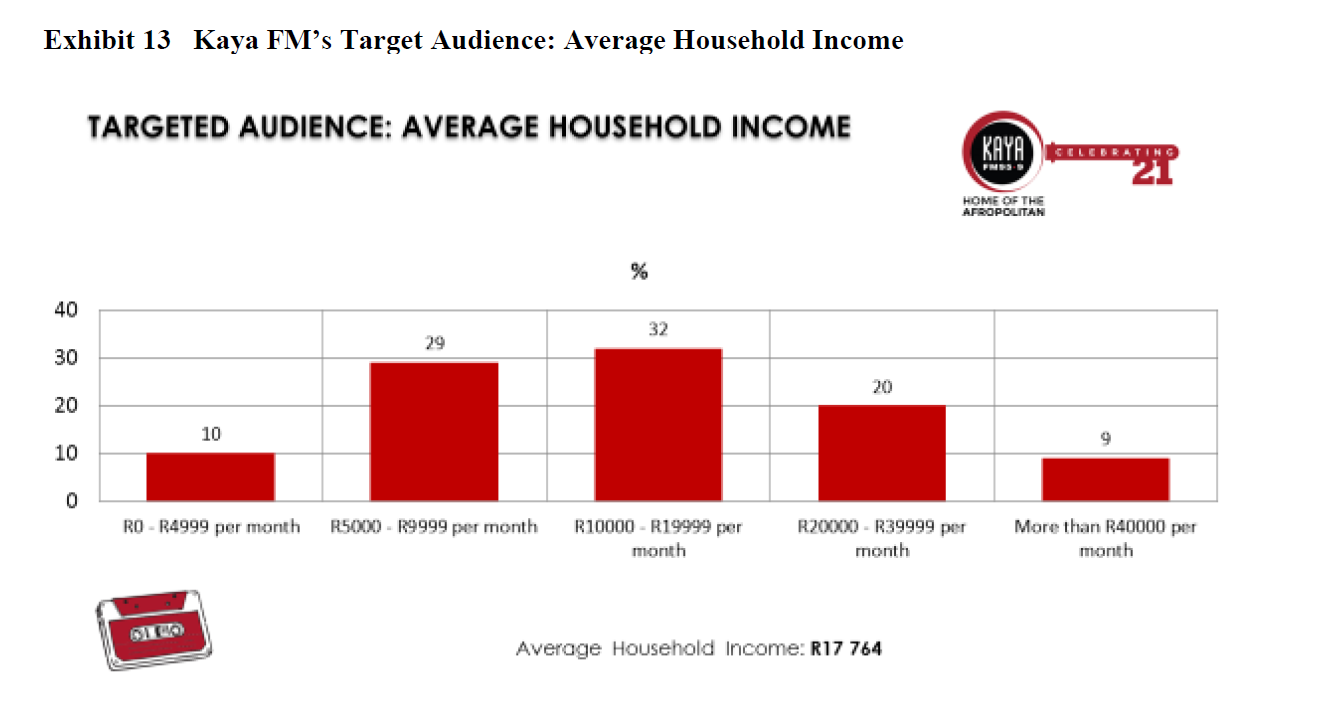
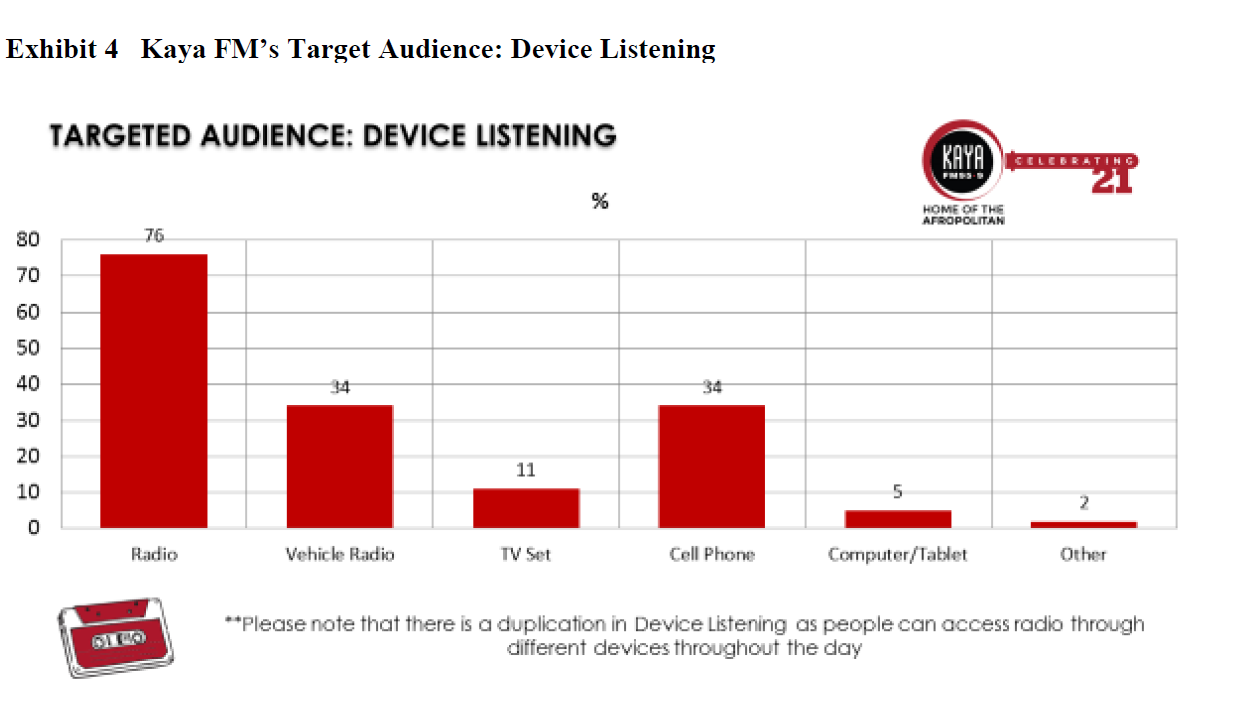
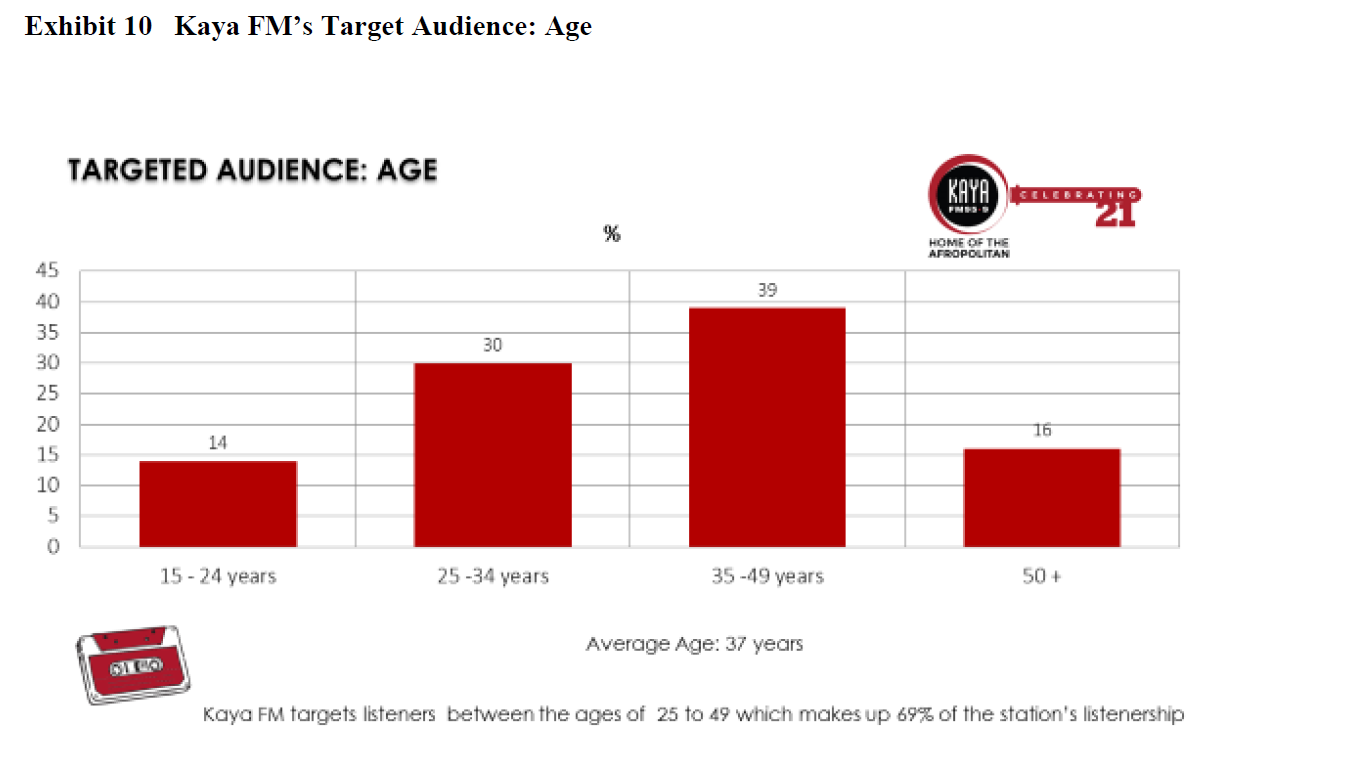
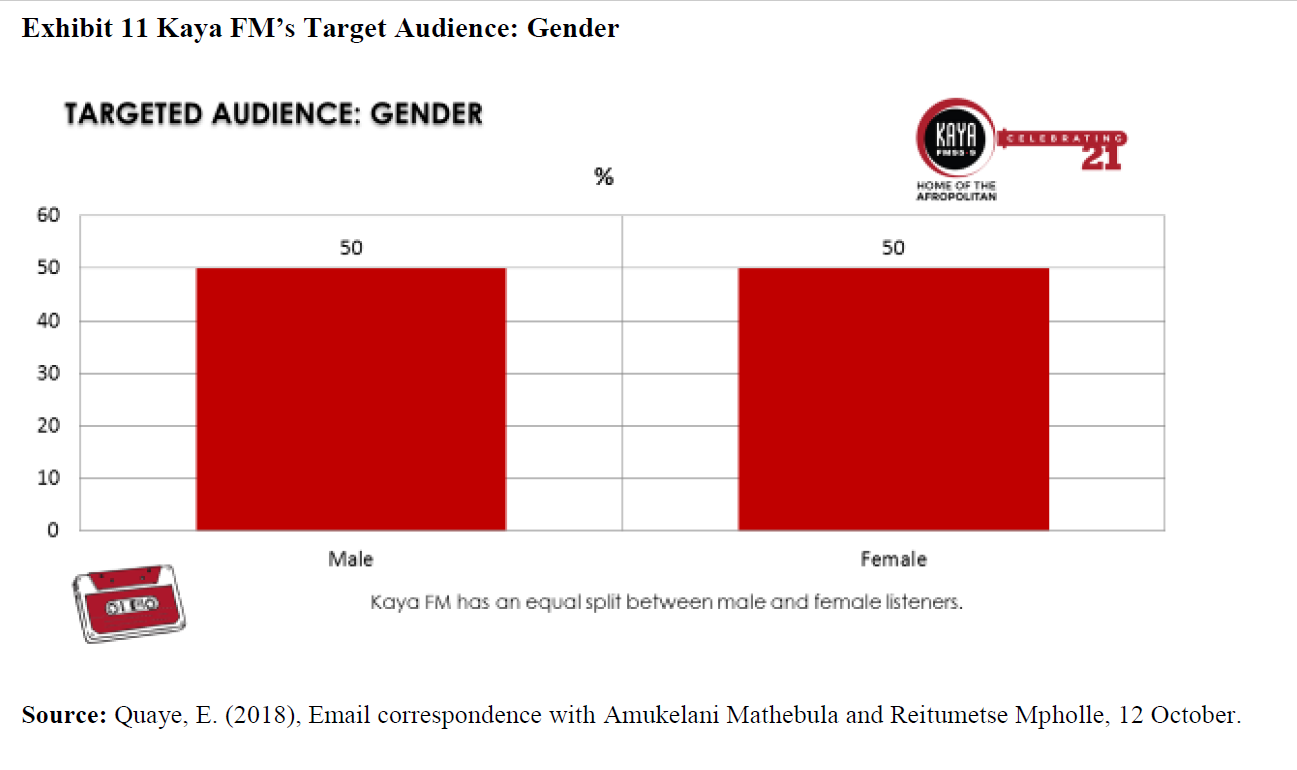
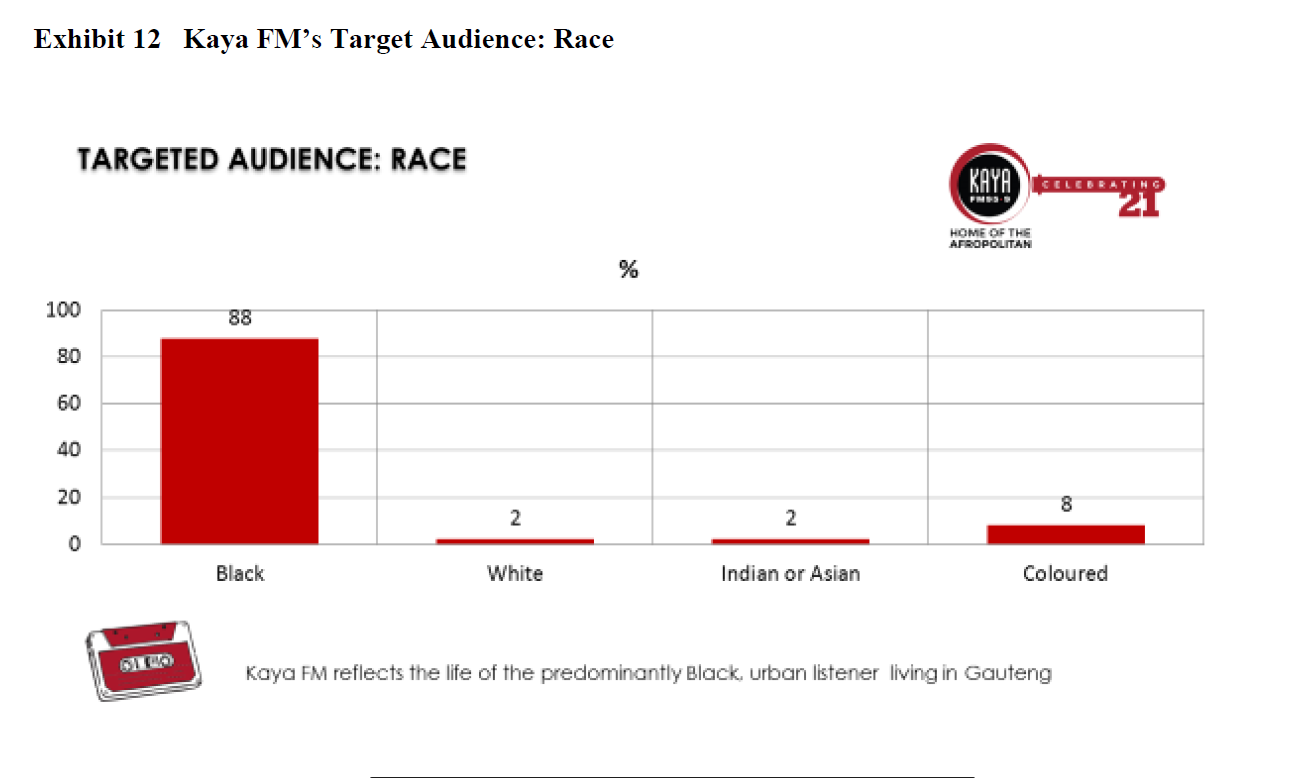
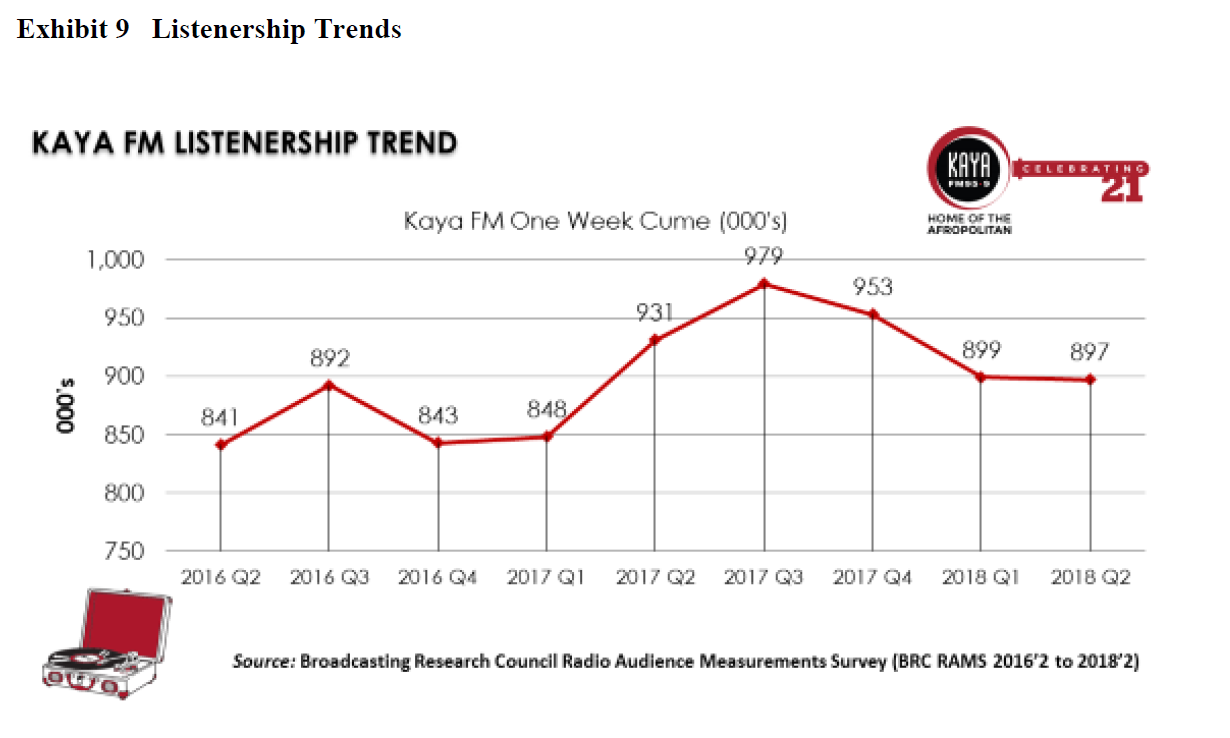
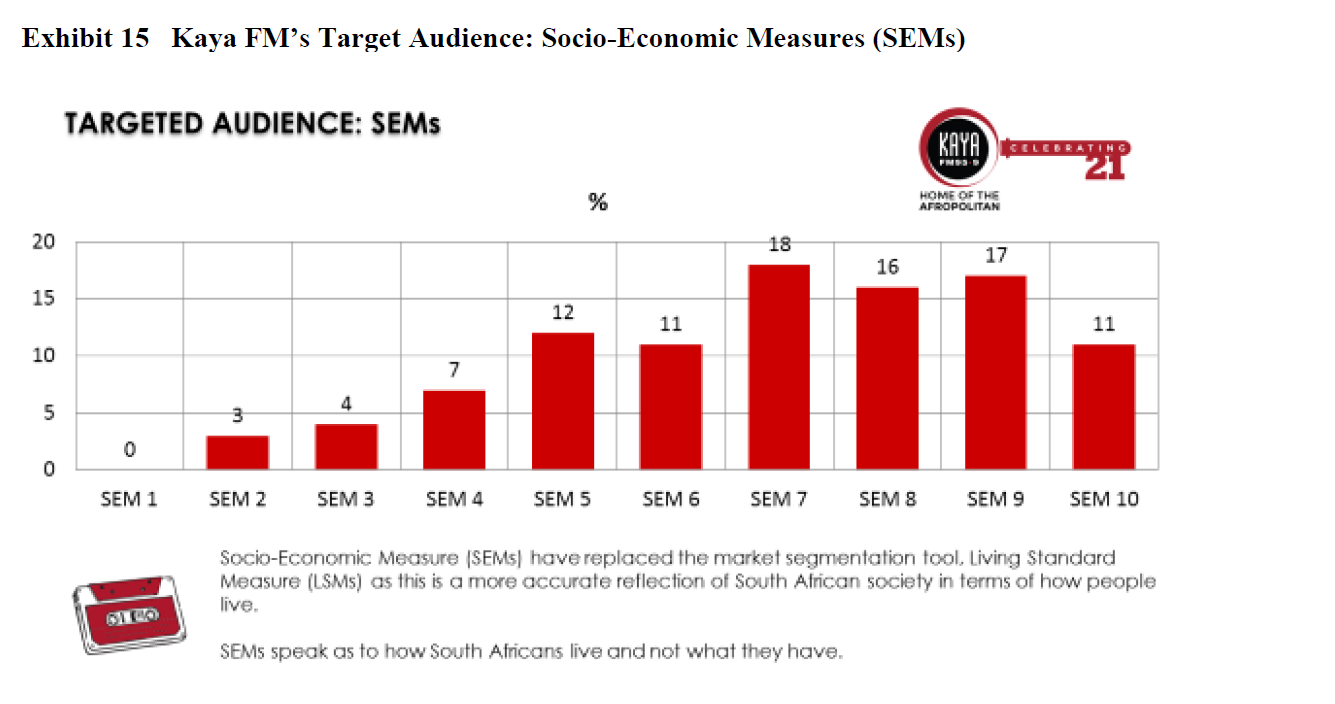
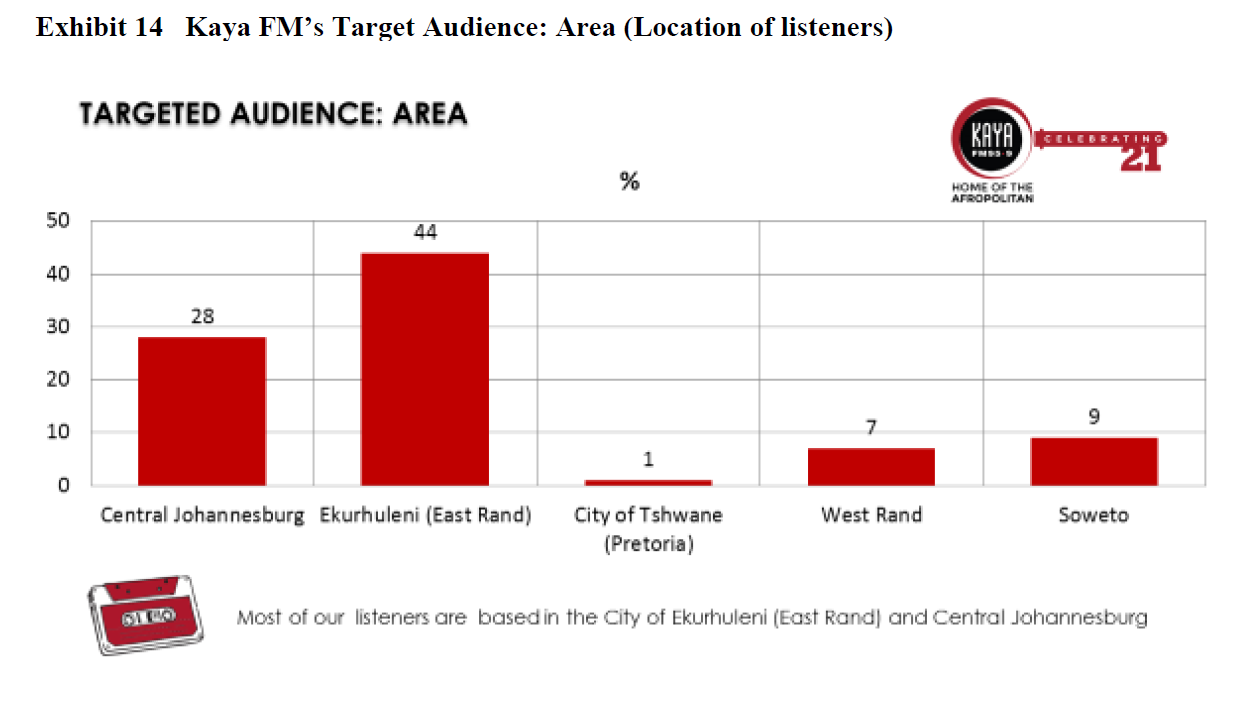
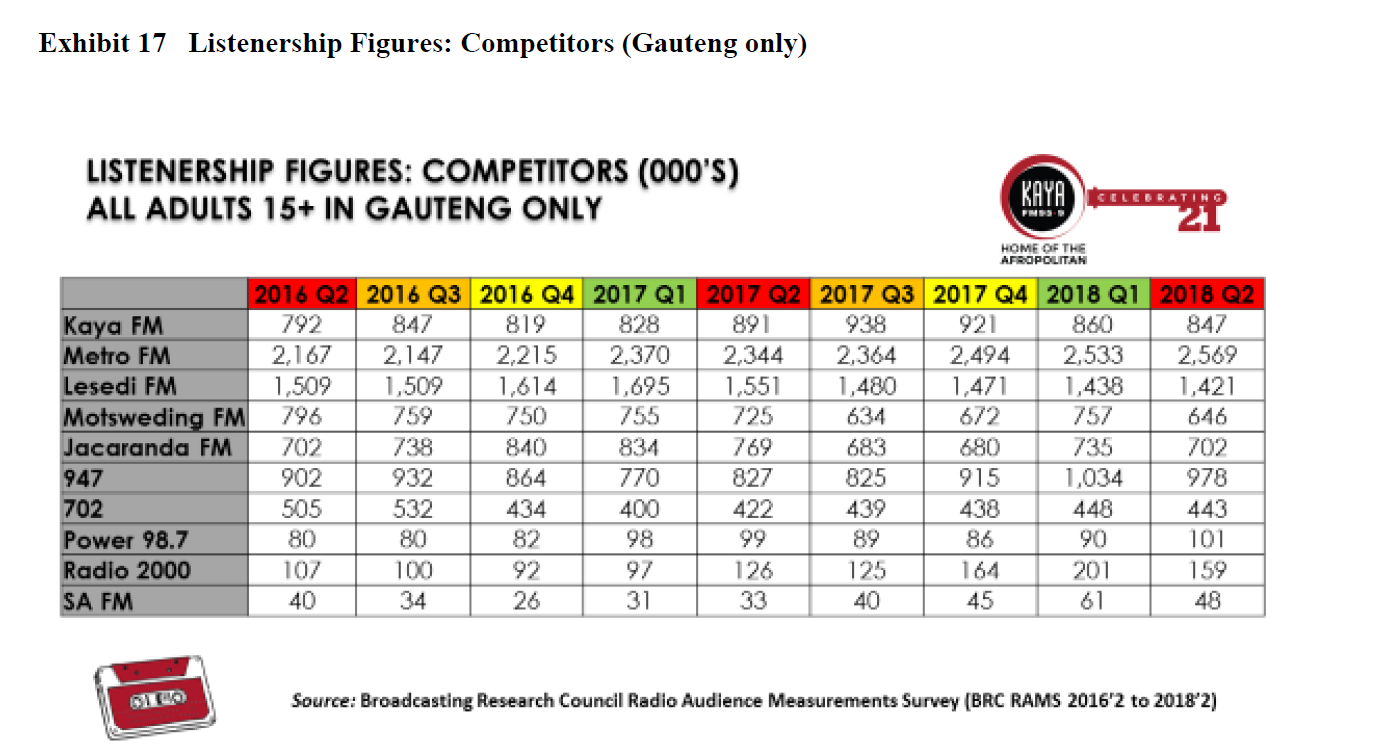
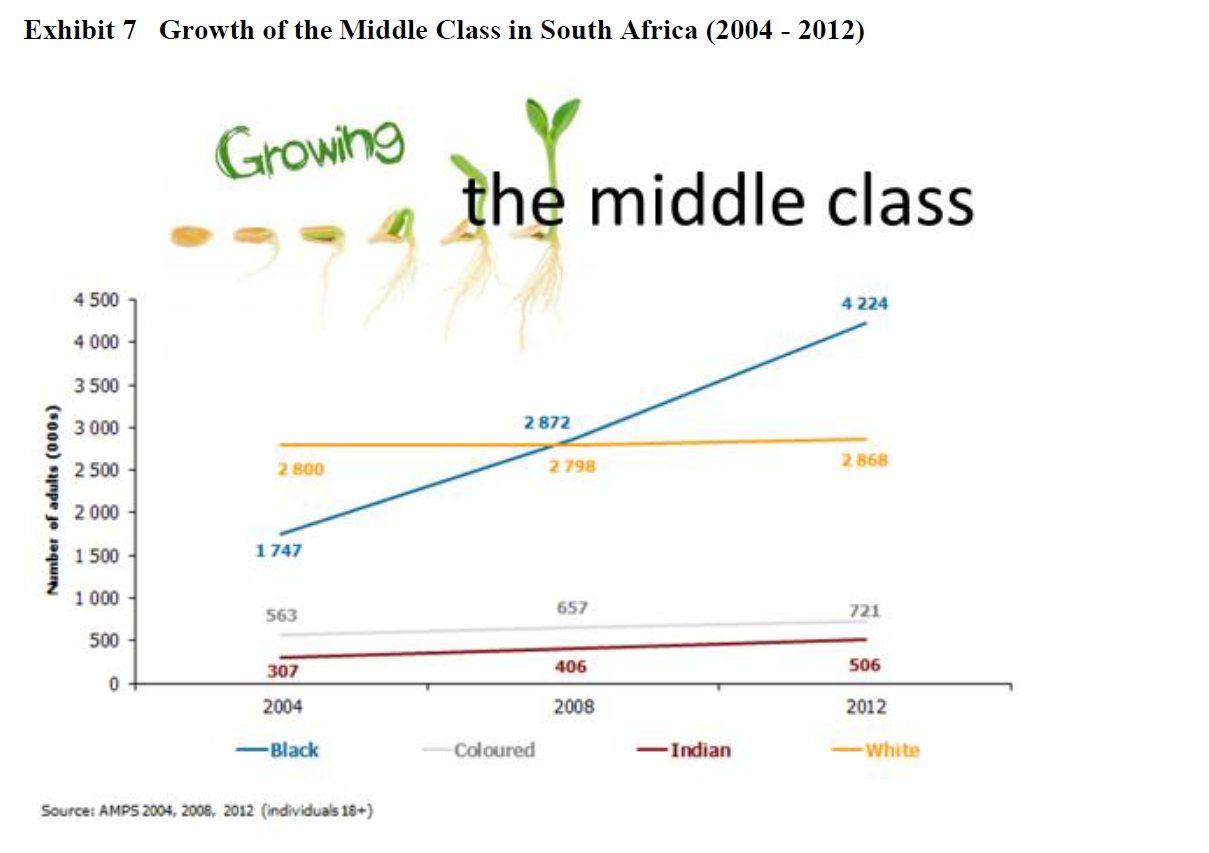

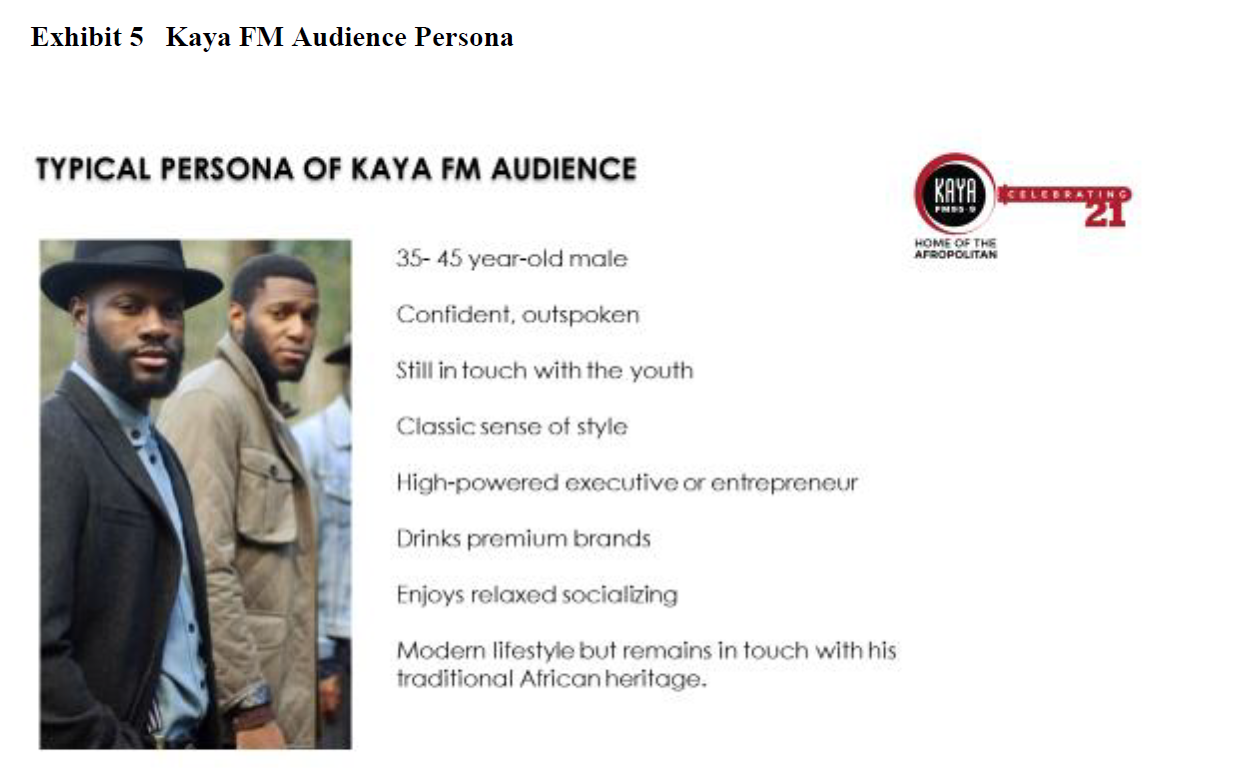
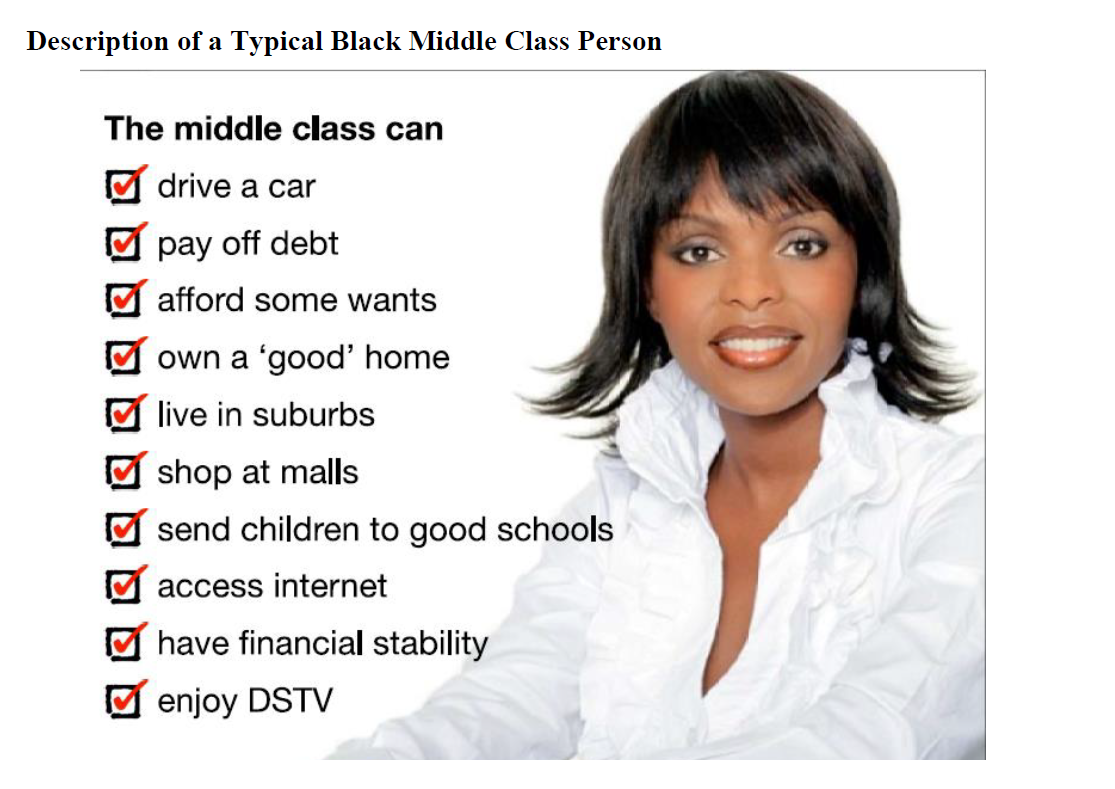
Step by Step Solution
There are 3 Steps involved in it
Step: 1

Get Instant Access to Expert-Tailored Solutions
See step-by-step solutions with expert insights and AI powered tools for academic success
Step: 2

Step: 3

Ace Your Homework with AI
Get the answers you need in no time with our AI-driven, step-by-step assistance
Get Started


